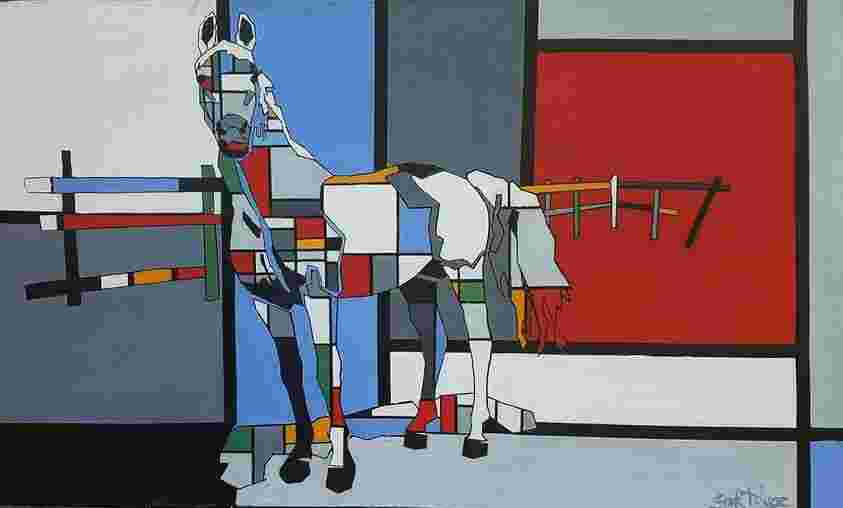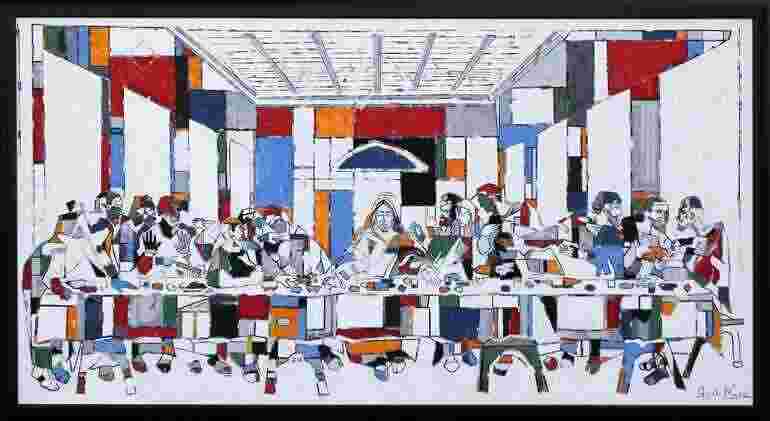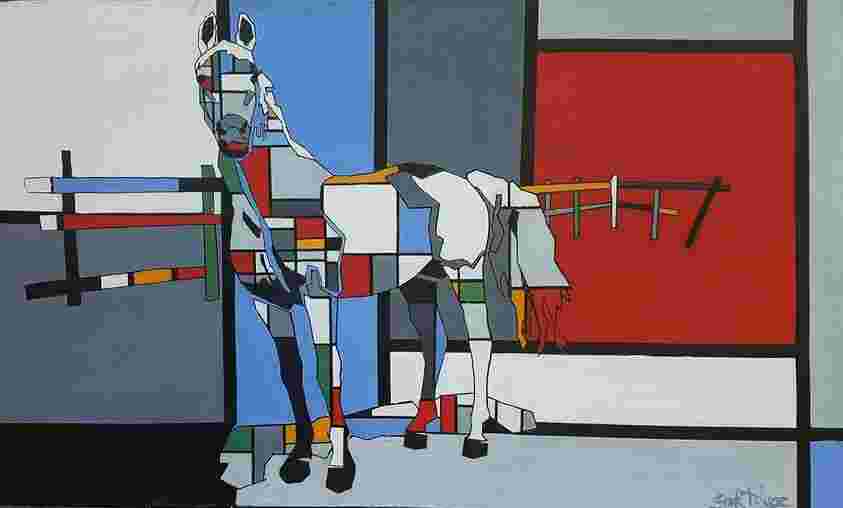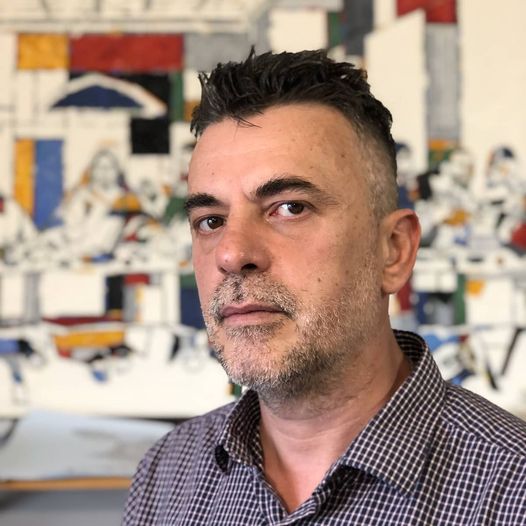Select your language
News

Neoplasticism
Neoplasticism in art through Mondrian's work
De Stijl was committed to the absolute devaluing of tradition, to exposing the deception of lyricism and feeling. Mondrian and De Stijl are undoubtedly a great chapter in the history of modern art.
For me, Mondrian has the aura of a true apostle of painting. In art there is a pure and unadulterated quality of creation and creativity. We can see Mondrian's works as one of the great stories of modernism culture.
Mondrian and his time are a major topic in the history of modern art.
The artists who belonged to it emphasized the need for abstraction, mathematical structure as opposed to impressionism and all baroque forms of art; on the contrary, they created an art of clarity and order. Their works show these properties by conveying them through straight lines, cubes, rectangles, and finally through colors reduced to primary: red, yellow, and blue, and neutral black, white, and gray. For Van Doesburg and Mondrian, these simplifications had a symbolic meaning based on Eastern philosophy and the mystical teachings of Theosophy.
Mondrian was particularly obsessed with the mystical implications of vertical-horizontal contrasts, so he spent a large part of his life exploring them. He then created some of the most distinctive works of art of the 20th century.
Mondrian felt that abstraction was not developing towards its ultimate goal – the exploration of pure reality. Plastic is what he chose to do in his research. Plastic expression meant the simple action of forms and colors, and reality is the reality of plastic expression. The new reality is the presence of the image itself as opposed to the romantic evocation of artistic feelings. Mondrian continued his work and not only influenced the abstract artists of painting and sculpture, but also the forms of the International Style in architecture. He later inspired many younger artists who would revolutionize American art after him. Mondrian strives for his autonomous, therefore purely plastic painting to be a kind of model, even a model of the spiritual, moral and social harmony that art should encourage.
Neoplasticism can be understood as an ideal project, as a symbol of the ideal of construction. The image is based on an analytical approach and gradual reduction. In essence, a real modern painting conceived and executed by a modern artist is "painting as the new icon of modernity".
Neoplasticism as Mondrian's essential painting invention is possible only on the foundations of the reception of the analytical cubism of Braque and Picasso.
In painting, its forerunners are Cézanne, that is, his principles of painting using a cup, a roller and a ball. By incorporating Cézanne's principles, Cubism first emerged, which branched out into Neoplasticism, De Stijl, Suprematism, and Constructivism, which established the fundamental canons of geometricism in fine arts.
The geometry of the city, the building, the gathering place of the collective, in a word, the public space is the goal of Mondrian's aspirations. Geometric abstraction draws its deepest roots from the spirit of music and the spirit of mathematics.
The aspiration of the modern artist is to arrange the world according to the harmony that reigns in his painting.
In the understanding of Mondrian's art, there is also a very spiritual feature of great importance, which the artist owes to the specific cultural traditions of the Dutch environment, and to the theosophy and mysticism he studied. Hence, the conclusion is that in the essence of Mondrian's art, spiritual and not primarily analytical and formal qualities appropriate to the spirit of the time prevail.
The tradition of painting should continue to be supplemented and completed - but never definitively supplemented and completed.
Geometric straight line
Visually, the simplest line is a straight line. A straight line is the earliest form of line created by the human mind. In order to make a straight line, the entire muscular system must be strained, and a straight line is by no means the simplest. Drawing such a straight line is difficult, especially for a child. If straight lines do appear frequently in early art, this proves how much they were valued. The straight line was invented by the sense of sight at the request of the principle of simplicity.
Delacroix notes in his diary that straight lines never occur in nature - they exist only in the human brain. Where man does use them, the ravages of time corrode them.
All effects are relative, the same form does not mean the same thing at all times. The meaning of vertical in Renaissance portraits is different from the meaning in portraits of primitive art. While in the second case it is the only form of representation, in the first it stands out from other possibilities, thus acquiring a special expression. A straight line introduces linear extension in space, and thus the thought of direction. In accordance with the law of differentiation, the first relationship that is obtained between lines is the simplest right angle relationship.
The main difference between horizontal and vertical is introduced by the weight of the earth. Under the influence of the earth's gravity, evolution incorporated the dominance of the two basic directions, horizontal and vertical, into the human nervous system.
In his paintings, Piet Mondrian demonstrated his understanding of the world in a dynamic relationship between the vertical as the dimension of desire and the horizontal as a solid foundation.
The horizontal is associated with calmness, the calmness of the sea..., while the vertical symbolizes the ascent to higher spheres.
Composition in a geometric straight line
I did not come up with my own compositional solutions by copying, but by long-term and complex arrangement of color relationships, composition and arrangement of various sketches in the computer programs Corel and Photoshop. The very choice of composition had to present my clear attitude.
The composition of selected elements and the symbolic and psychological meaning of colors are a kind of manuscript of my thoughts.
I make the comparison between linguistics and painting work because in language sentences consist of words and groups of words, and in my work, instead of words, straight lines - horizontal and vertical - are combined in a regular geometric given drawing of the subject, as well as pure color with non-colors.
The process of making the work itself is traditional, carried out by one's own hands. I transferred the drawing in black, trying to bring it to perfection. With the intention of covering the black basic line of the drawing with tape, I had to thicken the line itself so that the tape fits into its thickness. After painting and drying the paint, the tape is removed and a real black line remains.
I wanted my work to be based in the spirit of the times we live in, with an aspiration to see a recognizable style.
About the color
Goethe's thought: "Color is in us" can be used in the sense of paraphrase for today's psychological understanding of form.
We carry within us certain models of forms that structure our visual world. This applies to color not only because we can experience it as a sensation, but we can conjure it up in ourselves with our eyes closed.
The creative eye, the artist's, has the ability to establish unexpected but deeply thought-out subtle relationships and combinations between colors.
The meaning of colors and their symbolism is a phenomenon that we more or less constantly face through some of its forms that are perfectly integrated into our everyday life. It is not only related to religions, to the domains of the esoteric, but extends its meanings much more widely, to the manifestations of social and cultural life.
Piet Mondrian did not attach symbolic meaning to color, but a huge number of modern artists did, such as Kandinsky.
In my work, I tried to produce something not relying only on the usual experience of colors (as a means of painting) - by sight. These 4 pictures are actually the product of my personal experience of 4 colors: red, green, blue and yellow, with feelings and words. All the structures in the pictures, all the words that describe the colors, are my personal experience of trying to immerse myself in a different view of the world.
The symbolism of colors in a work of art reflects the effort of man to express his feeling and thought connection with it in accordance with the whole complex of historical and cultural circumstances.
The history of color symbolism testifies to a triple origin and each shade carries different meanings in each of the three languages: divine, sacred and profane.
White – the embodiment of purity and light, and expresses hope, chastity, triumph, glory, immortality; it is used in holidays dedicated to God, holy angels and preachers and in wedding ceremonies.
Red – fire, blood, passion, divine love.
Green - hope, the desire for eternal life, is dedicated to a large number of holidays.
Blue - the color of the sky and the sea, the color of freedom ...
Yellow – wisdom, love, faith, Christian virtues.
Black - the color of mourning and death, the color of infinity and space.
Gray – Melancholy.
From the above example of color interpretation, it can be seen that man has acquired the ability to evoke many things through color, so color itself stands as a kind of material representative of abstract concepts.
Whether green should be added as the fourth primary color has always been a matter of discussion, and I could not imagine my work, nor the relationship of colors and contrasts without green. Maybe green only seems primary under certain conditions, but Paul Klee said of the color wheel that it is based on the four primary colors (red, blue, yellow, and green). Green is the color of nature and water, and is dedicated to Aphrodite born from sea foam.
Green is the color of the water of Christ's baptism and in all religions green symbolizes the first stage of spiritual regeneration. The second level symbolizes air, blue as wisdom, and the third is fire, red as love. Green is also the color of the initiation of the spring of youth; it is the color of the prophets and for Muslims green is the color of Aaliyah's dress. It is, therefore, the color of nature's victory and therefore a symbol of every victory.
Yellow is expressed through the differences between good and evil; it can be the color of divine light and the color of the sun; as the color of gold, it signifies above all in heraldry positive virtues such as wisdom and constancy; it can mean infidelity and intelligence, health, but also betrayal. Therefore, Judas' dress is painted in yellow in Đot's painting The Betrayal of Judas. Colors appear to us as crossroads where art, science, philosophy, and religion meet. They make a bridge between physics and metaphysics, nature and the Divine.
Work process
I always wanted to achieve some real effect through my drawing, so that the viewer follows the contents, meanings and information of the work. One of the first situations when I felt inspired to work in this direction was to trace the drawing itself in black - using a regular line defined by a tape that is strong, effective and has a strong communicative power.
The most important thing I gained during my four-year study at the Academy of Fine Arts was a certain freedom given by professors who never imposed anything. Why not imagine a figurative element that will appear in the geometric form of the surface, which was previously divided into opposite pairs of figurative and abstract. My works were not created in one breath, but through hours of reflection, studious drawing, investing time and patience in such a work is necessary. The practice is an action art program that seeks the way to the universal.
The ultimate goal was to create a unique whole, a fragment and an impulse of time, to create a personal synthesis of lived experience in order to reckon with the ideal historical practice. Effort and effort can be seen through a studious drawing in which I have modified some elements, which is certainly mutually beneficial for the past and the present. Through Mondrian, I established new codes of perception and discovered new paths to freedom of expression.
I paint what my soul notices, what it thinks is important, because some subjects, like the environment, are not just physical space but our entire cultural heritage. The subject chose me, not me her. For me, art is the highest consciousness, the spirit, thought and word of man or, rather, the product of that consciousness is my work. Life is about constantly discovering the secret - of oneself as a human being, in constant observation as deep as possible into oneself, to childhood and the first memories. My research is a special research of history and the future, but the future that comes from modernity. I was very attracted to the value of the art of the historical period from the Renaissance to Modernism, and especially the masterpieces of geniuses, respected world painters.
The task was to create figural representations and import them into abstract pure elements, to oppose the horizontal-vertical clean line to the natural contrast of the broken and curved lines of the drawing. Artistic privilege is represented by the ability to understand nature and experience its meaning with the possibility of conveying and making that experience tangible. The rich tradition of our country contains the influences of the world's greatest heritage; Islamic, Near Eastern, Western civilizations and has an internationality in it that I wanted to build and put in one work.





